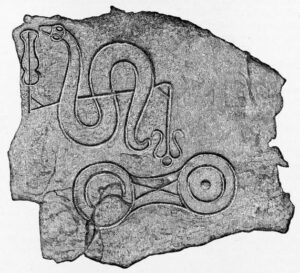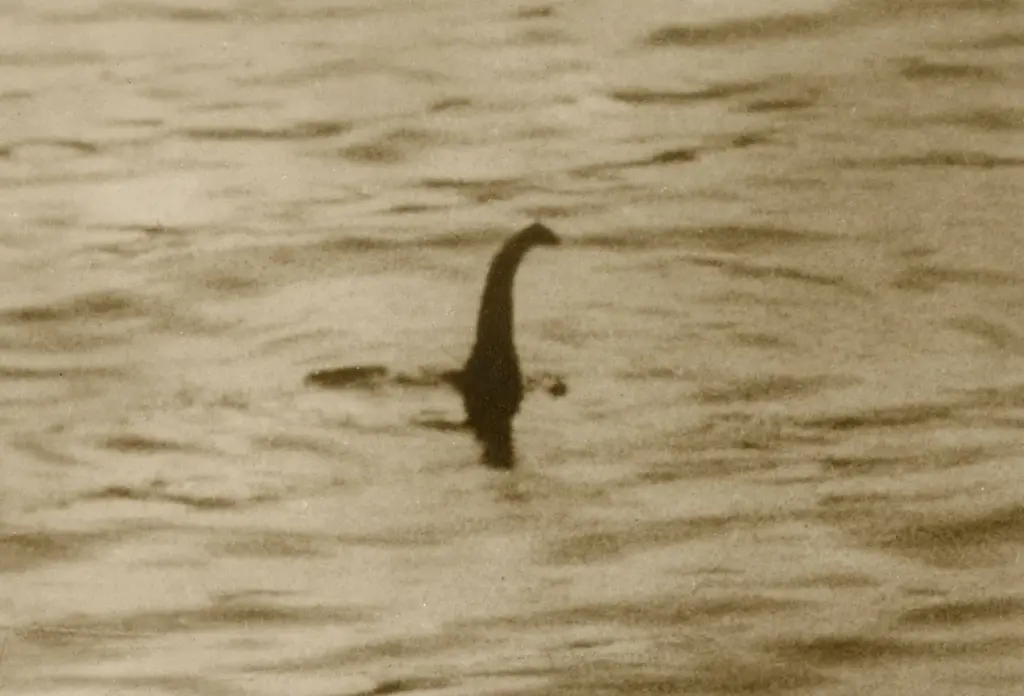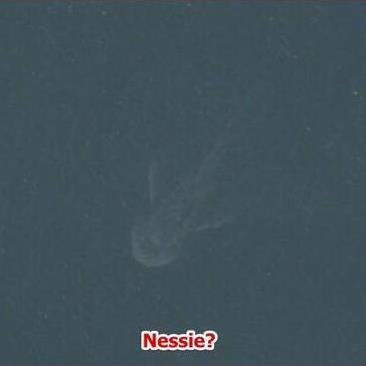Introduction
Friday, April 14th, 1933, a married couple—a respected businessman and his university graduate wife—stop their car, watching in surprise as a mysterious whale-like creature emerges from the calm waters of Loch Ness, less than a mile from the shore, before plunging back beneath the surface again. And a tourist industry is born!
The Loch Ness Monster, a cryptid creature lurking in the depths of Scotland’s Loch Ness, has fascinated the world for generations. In truth, this is not the first sighting or rumor of a monster in Loch Ness, but coming as it did at a time when travel was increasingly common and newspapers allowed information to travel faster and farther, it captured the imagination of the public.
The Legend Emerges
To unravel the story of the Loch Ness Monster, we must trace its origins much further back. The earliest written account of a monster in the Loch dates back to the 6th century but refers to an event many years prior.
Adomnán, an abbot of Iona Abbey, and saint who lived around 679-704 AD wrote Vita Columbae (Life of Columba), a biography of sorts about the founder of Iona and Adomnán’s ancestor on his father’s side. [mfn]https://en.wikipedia.org/wiki/Adomn%C3%A1n[/mfn]
Life of Columba is certainly not an unbiased work, however in it Adomnán, writes that in 565 Columba stopped a monster from killing one of his followers in the River Ness by making the sign of the cross and ordering it to halt. It’s worth noting that a siting in the River Ness does not entirely line up with the modern Nessie lore.

What can be confirmed is that Columba was indeed in the areas around Loch Ness around this time as part of his mission to convert the Picts to Christianity. There are also Pictish carvings in the general vacinity which depict a serpent-like beast. [mfn]https://www.digitscotland.com/scottish-archaeology-and-the-loch-ness-legend[/mfn] Whether this is really a depiction of Nessie though is a matter for debate as the Picts made regular use of snake symbols in their carvings.
It’s also worth noting that Scottish folklore contains many different water creatures, some friendly, some less so, which is hardly surprising given the geographic nature of the country.
20th Century Sightings

Slightly more recently, in an account that was not published in 1934, D. Mackenzie of Balnain claimed that in 1871 or 1872, see an object that could have been a log or an upturned boat moving slowly but gaining speed. Another sighting occurred in 1888 when Alexander Macdonald of Abriachan supposedly sighted a large stubby-legged animal surfacing from the loch within 50 yards of the shore.
It’s that April, 1933 siting that really kicked off the modern obsession with the Loch Ness Monster. The date is often listed as May but that’s because May 2nd is when the news paper article in the Inverness Courier was published. [mfn]https://www.inverness-courier.co.uk/news/report-of-strange-spectacle-on-loch-ness-in-1933-leaves-unanswered-question-what-was-it-139582/[/mfn]
The article was written by Alex Campbell, a water bailiff for Loch Ness and a part-time journalist after being told it by Mr Mackay. Although he and his wife were operators of a hotel which might lead you to question their motives, they did not go directly to the press and remained anonymous. [mfn]https://www.bbc.com/news/uk-scotland-22125981[/mfn]
There were further sightings in the Autumn and winter of 1933, in particular those of George Spicer and Hugh Gray. Spicer and his wife reported seeing a “most extraordinary form of animal”, described as 4 feet high and 25 feet long with a narrow neck, walk across the road toward the loch only 20 yards in front of them on 22 July 1933. This description is rather different to Aldie’s and it has been noted that it bares a striking resemblance to a dinosaur that featured in the movie King Kong around this time [mfn]https://www.nzherald.co.nz/world/did-king-kong-inspire-the-myth-of-the-loch-ness-monster/J5UR3D5VNKF6U6KQU6P76EYSJ4/[/mfn], but has cemented public perception of what Nessie might look like.
Hugh Gray provided the first actual photo of Nessie, taken near Foyers on November 12th 1933. [mfn]https://journalofscientificexploration.org/index.php/jse/article/view/2549[/mfn] The photo itself does not match George Spicer’s description and is at best extremely blurry, and quite possibly a double exposure of some sort, but it only further fueled the excitement. A number of possible explanations have been suggested including that it might be a dog fetching a stick from the loch or an otter swimming.

Inspired by all the sightings, in December 1933 the The Daily Mail commissioned Marmaduke Wetherell, a big-game hunter, to locate the monster. Wetherell did find some large footprints on the shores of the loch which he described as belonging to a “a very powerful soft-footed animal about 20 feet long.” But further investigation by the Natural History Museum proved those tracks to be identical to ones made by an umbrella stand or ashtray that has a hippopotamus leg on its base.
It was not clear at the time whether Wetherell was the perpetrator or a victim, but this was the first of many Nessie-related hoaxes. And while the discovery of the hoaxes only further clouds claims of the monster’s existence, they also continues to inspire.

The most famous Nessie hoax has to be the so-called “surgeon’s photo”. In 1934 English physician Robert Kenneth Wilson claimed to have photographed the creature. The, now iconic, image appeared to show the monster’s small head and neck. When The Daily Mail printed the photograph, it became an international sensation. Based on the shape of the neck, people speculated speculated that the creature might be a plesiosaur, a marine reptile thought to have gone extinct over 65 million years ago.
Wilson’s photograph was finally revealed to be a hoax in 1999, although there had been allegations it was a fake since 1975. Nessie – The Surgeon’s Photograph Exposed details how Marmaduke Wetherell, his son Ian, Christian Spurling his son-in-law and Maurice Chambers attached modeled a monster head and neck out of wood putty and attached it to a toy submarine, then took photos of it in Loch Ness. The alleged reason behind the hoax was that Wetherell wanted some revenge for being lampooned for his previous incorrect claims.
Surveys and Science
Despite the revelation that many reports and photos are in fact hoaxes, public enthusiasm for Nessie has never dimmed. Sightings continued throughout the 20th century and into the 21st. Over the years a number of attempts have been made to take a more systematic and scientific approach to finding the Loch Ness Monster.
Multiple sonarr studies of Loch Ness have been conducted including attempts in 1967, 1972, 1975, 1987, 2001, 2003 and 2008 In 1987 and in 2003 sonar explorations of the Loch. Probably the most famous of those are Operation Deepscan in 1987 in which a fleet of boats were deployed across the width of the loch and used echo-sounding equipment as they sailed the length of it. An initial sonar contact of an unidentified object caused some excitement, but further analysis concluded it was most likely just debris at the bottom of the loch.
Then in 2003 for their documentary Searching for the Loch Ness Monster, the BBC used 600 sonar beams and satellite tracking to survey the Loch again. It was claimed that the equipment was capable of identifying objects as small as a buoy but the end result was that no animal of substantial size was found and the program concluded that the Loch Ness Monster was a myth. This deterred, no one at all.
Taking a different tack, in June 2018 an international group of researchers did a DNA survey of Loch Ness. The results were disappointing for Nessie believers. While a significant amount of eel DNA was obtained, no large fish, shark, reptile or otter DNA was obtained. This did leave open the possibility of a giant eel, but could equally be explained by the presence of lots of smaller eels.
Debunking the Myths
While believers hold steadfast to the idea of a hidden leviathan, skeptics have offered scientific explanations for reported sightings. Misidentifications of natural phenomena, hoaxes, and the potential existence of a large fish species have all been proposed.
It is a known phenomena that the human eye and brain are extremely good pattern matchers. So good in fact that they will often see patterns which aren’t actually there like faces in toast. Over the years a number of suggestions have been made for misidentification, some more likely than others. These include:

- Eels
- Elephants
- Greenland Sharks
- Wels Catfish
It’s worth noting that the 2018 DNA survey potentially rules out all of those except for Eels. Other potential explanations for the sightings include:
- Boat Wakes [mfn]https://www.pcmag.com/news/image-of-loch-ness-monster-in-apple-maps-is-just-boat-wake[/mfn]
- Trees
- Optical Effects
- Seismic Gas
The Impact on Tourism
There’s no question that the Loch Ness Monster has been a huge boon for Scottish tourism, drawing visitors from all over the world to Loch Ness and as result to other parts of the country as well. It has been claimed that there are only 10 days a year where Nessie doesn’t get a mention somewhere around the world.
In 2019 it is estimated that over 150 million people visited Scotland, a country with a population of roughly 5.5 million and is thought to contribute something like £6 Billion to the Scottish GDP or roughly 5%. It has been calculated that visited to Loch Ness and the surrounding area alone contribute something like £41 million to the Scottish economy. [mfn]https://finance.yahoo.com/news/much-loch-ness-monster-worth-190114514.html[/mfn]
The Enigma Persists
In the end perhaps it does not really matter what science has to say on the topic. The myth of Nessie resonates with people on a different level. There is an appeal to the idea of the unknown, mysterious and majestic monster. No matter what evidence is presented there’s always that kernel of doubt which allows people to wonder “ah, but…”
Scotland’s myths and legends are full of aquatic creatures like the Selkies, the Kelpies and the Morag. That shouldn’t surprise anyone as Scotland is a nation bounded by water and containing almost 800 offshore islands. The furthest point from the sea in Scotland is Glen Quoich near Braemar which is only 40.5 miles from the coast as the crow flies. The Highland’s being what they are that’s probably closer to 60 miles by road, but still no more than a couple of hours distance.
The lives of the inhabitants of Scotland have been entwined with that of the sea and water for generations and it is a country that very much embraces its history and legends.
The search for Nessie has provided inspiration and purpose for many people. Along the way it has also provided additional scientific knowledge, but perhaps it is best if we never definitely answer the question.
Discover more from Alba Fhathast
Subscribe to get the latest posts sent to your email.




